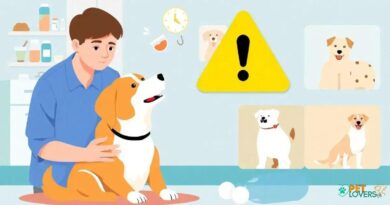What is Leash etiquette
Understanding Leash Etiquette
Leash etiquette refers to the set of unwritten rules and best practices that dog owners should follow while walking their dogs on a leash. This concept is crucial for ensuring the safety and comfort of both dogs and their human companions, as well as other pedestrians and animals in the vicinity. By adhering to leash etiquette, dog owners can foster a more pleasant and harmonious environment in public spaces.
The Importance of Proper Leash Handling
Proper leash handling is essential for maintaining control over your dog during walks. A well-held leash allows you to guide your dog effectively, preventing sudden lunges or distractions that could lead to accidents. It’s important to keep the leash short enough to maintain control but long enough to give your dog some freedom to explore their surroundings. This balance is key to practicing good leash etiquette.
Choosing the Right Leash
The type of leash you choose can significantly impact your ability to practice good leash etiquette. Standard flat leashes are typically recommended for everyday walks, while retractable leashes can offer more freedom but may lead to tangles and lack of control in crowded areas. Consider your dog’s size, temperament, and the environment in which you’ll be walking to select the most appropriate leash for your needs.
Maintaining a Safe Distance
One of the fundamental aspects of leash etiquette is maintaining a safe distance from other dogs and people. This is particularly important if your dog is reactive or tends to get overly excited around other animals. By keeping a respectful distance, you can help prevent potential conflicts and ensure a more enjoyable experience for everyone involved.
Communicating with Other Dog Owners
Effective communication with other dog owners is a vital component of leash etiquette. If you see another dog approaching, it’s courteous to ask the other owner if their dog is friendly before allowing your dogs to interact. This simple act of communication can help avoid misunderstandings and ensure that both dogs feel comfortable during their encounter.
Being Mindful of Your Surroundings
Being aware of your surroundings is crucial when practicing leash etiquette. Pay attention to other pedestrians, cyclists, and potential distractions that could cause your dog to react unexpectedly. By staying alert and prepared, you can navigate crowded areas more effectively and ensure a safe walking experience for everyone.
Training Your Dog for Leash Manners
Training your dog to exhibit good leash manners is essential for practicing leash etiquette. Teaching commands such as “heel,” “sit,” and “stay” can help your dog understand how to behave while on a leash. Consistent training sessions and positive reinforcement will encourage your dog to walk calmly beside you, making your walks more enjoyable and stress-free.
Handling Unexpected Situations
Even with the best planning, unexpected situations can arise during walks. Whether it’s encountering a loose dog or a sudden loud noise, being prepared to handle these moments is part of good leash etiquette. Stay calm, maintain control of your dog, and use commands to redirect their attention if necessary. This will help you navigate challenges while keeping your dog safe.
Respecting Leash Laws and Regulations
Many parks and public spaces have specific leash laws and regulations in place to ensure the safety of all visitors. Familiarize yourself with these rules and adhere to them while walking your dog. Not only does this demonstrate responsible pet ownership, but it also contributes to a positive community atmosphere where everyone can enjoy their time outdoors.
Promoting a Positive Dog Walking Experience
Ultimately, practicing good leash etiquette promotes a positive dog walking experience for you, your dog, and others in your community. By being considerate, respectful, and proactive, you can help create a welcoming environment for all dog owners and their furry companions. Embracing these practices will lead to more enjoyable walks and a stronger bond with your dog.



